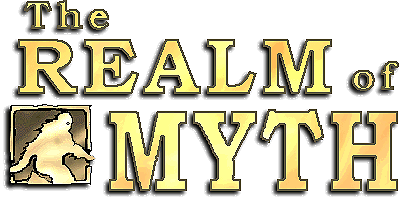|
 Kivioq Kivioq
 Sasquatch Sasquatch
 Jos. Montferrand Jos. Montferrand
 Alexis-le-trotteur Alexis-le-trotteur
 Johnny Canuck Johnny Canuck
The Realm of Myth:
Extradordinary Beings and Legendary Heroes
It is not easy to free myth from reality.
—Earle Birney
Early history is coloured by myth. With each passing year, as the heroes of the past are remembered by fewer people who actually saw them, folk history colours their feats in the suggestive realm of memory, symbolism, and myth.
Historic personalities often acquire mythic dimensions because a particular group admires their qualities. In time, as generations tell, re-tell, and build upon the inspiration of the real life story, it grows to mythic proportions.
Purely fictional beings are no less capable than real-life heroes of embodying the fears, hopes, and values of a society. Popular history does not carefully distinguish heroes who once lived as we do from those born in the imagination. The deeds of people admired during their lifetime can evolve in memory into superhuman or legendary exploits, but so can the tales of a good storyteller.
Monsters and Extraordinary Beings
The primacy of the wilderness is a common theme in Canadian folklore. Its mystery and harsh power inspired a highly developed pantheon of supernatural beings in Native mythology.
Kivioq, the great traveller, was known to Inuit in all parts of the North. Raven and Nanabozo are examples of the trickster figure in Canadian Indian mythology. They perform heroic feats at times and at others appear as buffoons, whose exploits are recounted for humorous purposes. Monsters and evil spirits too are said to have lurked in the woods and waters of the land.
Newcomers from across the ocean, haunted by the immensity of the vast frontier, brought or developed their own tales of superhumans or monsters. In Eastern Canada, where European immigrants lived in close proximity to one another, they often imported their cultural traditions from the mother country. Mermaids appeared in coastal waters, and werewolves terrorized the early settlements that had been carved out of the wilderness.
In Western Canada, pioneers were more isolated, not only from each other but from their own cultural sources. In these conditions, the settlers adopted local monster lore to supplement their own distant native myths, as they tried to overcome their fear of the unfamiliar land. One of the best-known monsters they adopted was Sasquatch. Aboriginals, explorers, settlers, and tourists have recorded sightings of hairy mountain men for hundreds of years.
Legendary Heroes
Unlike the Natives, the new settlers saw this continent as a harsh adversary to overcome, and they pitted themselves against the New World. In extreme conditions, requiring equally extreme qualities, folk traditions glorified survival. Perseverance and exceptional strength became the stuff of folklore; tales of those who overpowered nature to become the fabric of legend.
Strong men, both real and mythical, became very popular in the nineteenth century. Their stories were often inspired by the rough life of the logging camp.
Superheroes and strong men have never lost their appeal. During World War II, superheroes based on Canadian folk figures appeared in comic books, providing a source of national identification for all Canadians.
|




